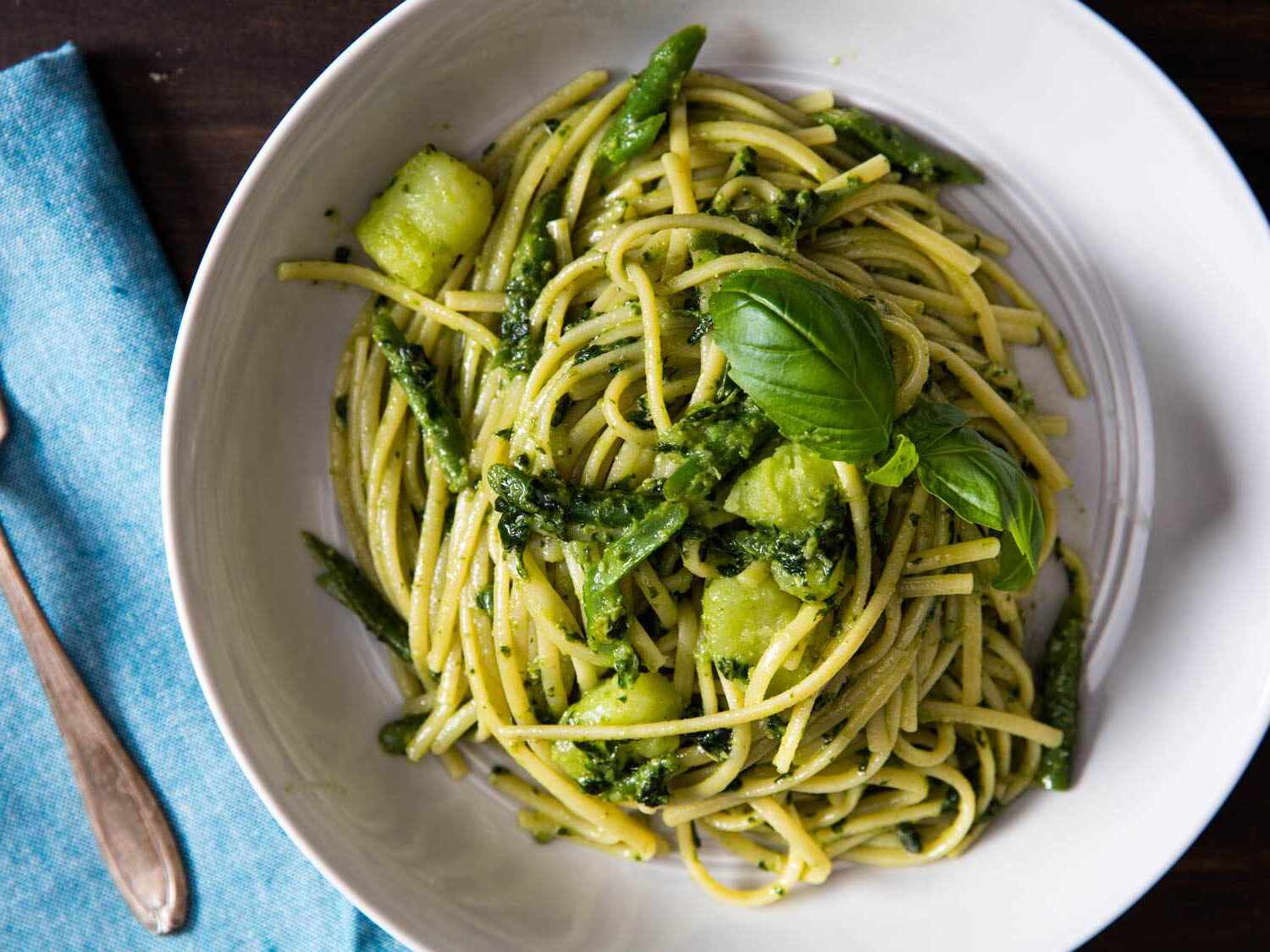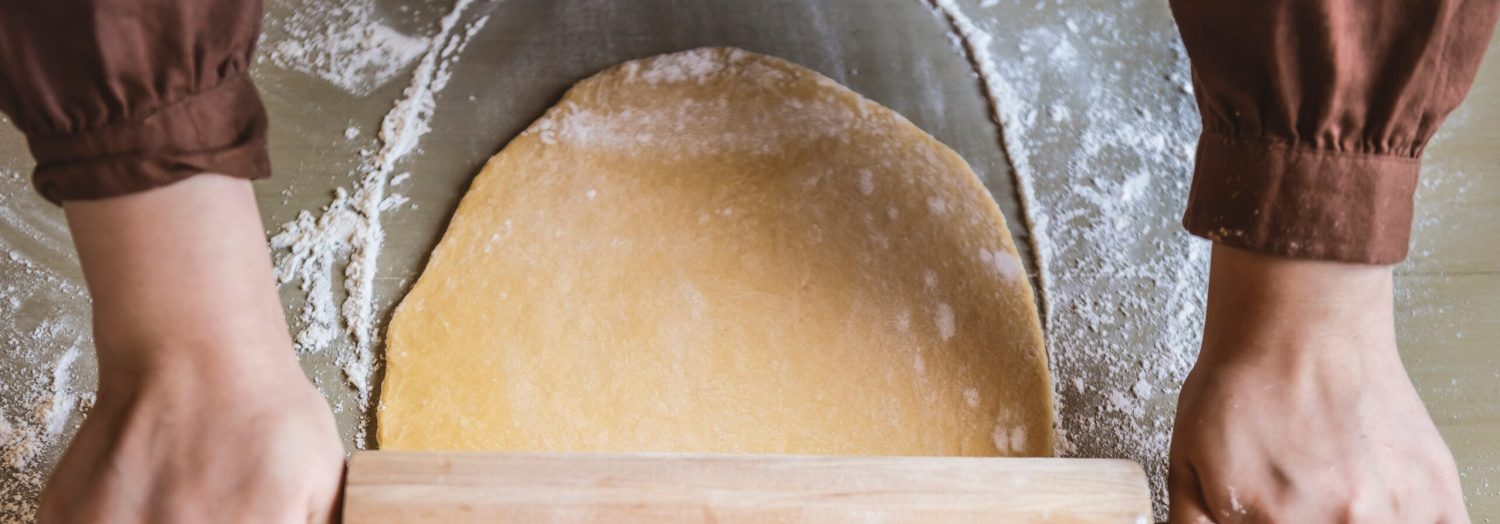This pesto pasta recipe is a delightful blend of fresh basil leaves, parmesan cheese, and toasted pine nuts. It's a quick and easy dish that bursts with flavor, making it perfect for a weeknight dinner or a special occasion. The creamy pesto sauce coats the pasta beautifully, creating a harmonious balance of textures and tastes.
Some ingredients in this recipe might not be staples in every kitchen. Toasted pine nuts add a rich, nutty flavor but can be pricey and are sometimes hard to find. Fresh basil leaves are essential for the vibrant green color and aromatic taste of the pesto. Make sure to pick up a good quality olive oil as it greatly influences the overall flavor of the dish.

Ingredients For Pesto Pasta Recipe
Basil leaves: Fresh and aromatic, they form the base of the pesto sauce.
Parmesan cheese: Adds a salty, umami flavor and creamy texture to the sauce.
Olive oil: A high-quality oil that binds the ingredients together and adds richness.
Toasted pine nuts: Provide a nutty flavor and a bit of crunch to the pesto.
Garlic: Adds a pungent, savory depth to the sauce.
Salt: Enhances the flavors of all the ingredients.
Pasta: The vehicle for the pesto sauce, any type will work.
Technique Tip for This Recipe
To achieve a smoother and more flavorful pesto sauce, try blanching the basil leaves for a few seconds in boiling water, then immediately transferring them to an ice bath. This technique helps to preserve the vibrant green color and reduces any bitterness in the basil. Additionally, when blending the ingredients, start with a small amount of olive oil and gradually add more until you reach the desired consistency. This allows for better control over the texture of your pesto.
Suggested Side Dishes
Alternative Ingredients
fresh basil leaves - Substitute with spinach leaves: Spinach provides a similar texture and mild flavor, making it a good alternative for pesto.
fresh basil leaves - Substitute with arugula: Arugula adds a peppery taste, giving the pesto a unique twist while maintaining the green color.
grated parmesan cheese - Substitute with pecorino romano: Pecorino Romano has a similar texture and a slightly stronger flavor, which works well in pesto.
grated parmesan cheese - Substitute with nutritional yeast: Nutritional yeast provides a cheesy flavor and is a great vegan alternative.
olive oil - Substitute with avocado oil: Avocado oil has a similar consistency and a mild flavor that complements the pesto.
olive oil - Substitute with sunflower oil: Sunflower oil is a neutral oil that can replace olive oil without altering the taste significantly.
toasted pine nuts - Substitute with toasted walnuts: Walnuts offer a similar texture and a slightly earthy flavor, making them a good alternative.
toasted pine nuts - Substitute with toasted almonds: Almonds provide a mild, nutty flavor and a similar crunch to pine nuts.
minced garlic - Substitute with garlic powder: Garlic powder can be used in smaller quantities to provide a similar garlic flavor.
minced garlic - Substitute with shallots: Shallots offer a milder, sweeter flavor that can add a different dimension to the pesto.
salt - Substitute with soy sauce: Soy sauce can add a salty and umami flavor, but use sparingly to avoid overpowering the pesto.
salt - Substitute with sea salt: Sea salt provides a similar salty taste but with a slightly different mineral profile.
any type pasta - Substitute with zucchini noodles: Zucchini noodles are a low-carb alternative that pairs well with pesto.
any type pasta - Substitute with whole wheat pasta: Whole wheat pasta offers more fiber and a slightly nutty flavor, making it a healthier option.
Other Alternative Recipes
How to Store or Freeze Your Dish
Allow the pesto pasta to cool completely before storing. This helps prevent condensation, which can make the pasta soggy.
Transfer the pesto pasta to an airtight container. Make sure the container is clean and dry to maintain the pasta's freshness.
For short-term storage, place the container in the refrigerator. The pesto pasta will stay fresh for up to 3-4 days.
If you wish to freeze the pesto pasta, portion it into individual servings. This makes it easier to thaw and reheat only what you need.
Place the portions in freezer-safe bags or containers. Squeeze out as much air as possible before sealing to prevent freezer burn.
Label the containers with the date to keep track of how long the pesto pasta has been stored.
When ready to eat, thaw the pesto pasta in the refrigerator overnight. For a quicker option, use the defrost setting on your microwave.
Reheat the pesto pasta gently on the stovetop or in the microwave. Add a splash of olive oil or a bit of water to help revive the sauce's creamy texture.
If the pesto sauce appears too thick after reheating, mix in a small amount of pasta water or chicken broth to achieve the desired consistency.
Garnish with extra parmesan cheese or fresh basil leaves before serving to enhance the flavor and presentation.
How to Reheat Leftovers
Stovetop Method:
- Place a non-stick skillet over medium heat.
- Add a splash of olive oil to the skillet.
- Once the oil is warm, add the leftover pesto pasta.
- Stir occasionally to ensure even heating, for about 5-7 minutes.
- If the pasta seems dry, add a tablespoon of water or chicken broth to restore moisture.
- Serve hot and enjoy the revived flavors.
Microwave Method:
- Transfer the pesto pasta to a microwave-safe dish.
- Add a splash of olive oil or a tablespoon of water to keep the pasta from drying out.
- Cover the dish with a microwave-safe lid or plastic wrap, leaving a small vent for steam to escape.
- Microwave on medium power for 1-2 minutes.
- Stir the pasta and check the temperature.
- If needed, continue microwaving in 30-second intervals until heated through.
- Serve immediately.
Oven Method:
- Preheat your oven to 350°F (175°C).
- Place the pesto pasta in an oven-safe dish.
- Drizzle with a bit of olive oil or add a splash of vegetable broth to keep it moist.
- Cover the dish with aluminum foil to prevent the pasta from drying out.
- Bake for about 15-20 minutes, or until heated through.
- Remove the foil for the last 5 minutes if you prefer a slightly crispy top.
- Serve hot and enjoy the comforting warmth.
Double Boiler Method:
- Fill a large pot with water and bring it to a simmer.
- Place a heatproof bowl over the pot, ensuring it doesn't touch the water.
- Add the pesto pasta to the bowl.
- Stir occasionally, allowing the steam to gently reheat the pasta.
- This method helps retain the pesto sauce's vibrant flavor and texture.
- Once heated through, serve immediately.
Best Tools for This Recipe
Large pot: Used to cook the pasta according to package instructions.
Colander: Essential for draining the cooked pasta.
Blender: Combines basil leaves, parmesan cheese, olive oil, pine nuts, garlic, and salt into a smooth pesto sauce.
Measuring cups: Helps measure out the basil leaves, parmesan cheese, olive oil, and pine nuts accurately.
Garlic press: Useful for mincing the garlic cloves efficiently.
Spatula: Handy for scraping down the sides of the blender to ensure all ingredients are well combined.
Mixing bowl: Used to toss the cooked pasta with the pesto sauce until well coated.
Serving bowl: Ideal for serving the pesto pasta immediately.
How to Save Time on This Recipe
Pre-make the pesto: Prepare the pesto sauce in advance and store it in the fridge for up to a week. This way, you can just toss it with freshly cooked pasta when needed.
Use a food processor: Instead of a blender, use a food processor to make the pesto. It’s faster and easier to clean.
Toast pine nuts in bulk: Toast a large batch of pine nuts and store them in an airtight container. This saves time on future recipes.
Boil water quickly: Use an electric kettle to boil water faster for cooking the pasta.
Pre-grated cheese: Buy pre-grated parmesan cheese to save time on grating.

Pesto Pasta Recipe
Ingredients
Pesto Sauce
- 2 cups Fresh Basil Leaves
- ½ cup Parmesan Cheese grated
- ½ cup Olive Oil
- ⅓ cup Pine Nuts toasted
- 3 cloves Garlic minced
- 1 pinch Salt
Pasta
- 400 grams Pasta any type
Instructions
- 1. Cook the pasta according to package instructions. Drain and set aside.
- 2. In a blender, combine basil leaves, Parmesan cheese, olive oil, pine nuts, garlic, and salt. Blend until smooth.
- 3. Toss the cooked pasta with the pesto sauce until well coated.
- 4. Serve immediately and enjoy!
Nutritional Value
Keywords
Suggested Appetizers and Desserts
More Amazing Recipes to Try 🙂
- Hawaiian Salad Recipe15 Minutes
- Albondigas Meatball Soup Recipe1 Hours
- BLT Salad Recipe25 Minutes
- Strawberry Cake Recipe50 Minutes
- Roasted Pork Chops Recipe30 Minutes
- Vietnamese Iced Coffee Recipe10 Minutes
- Ricotta Cheese Recipe40 Minutes
- Fried Rice with Ham Recipe25 Minutes


Leave a Reply